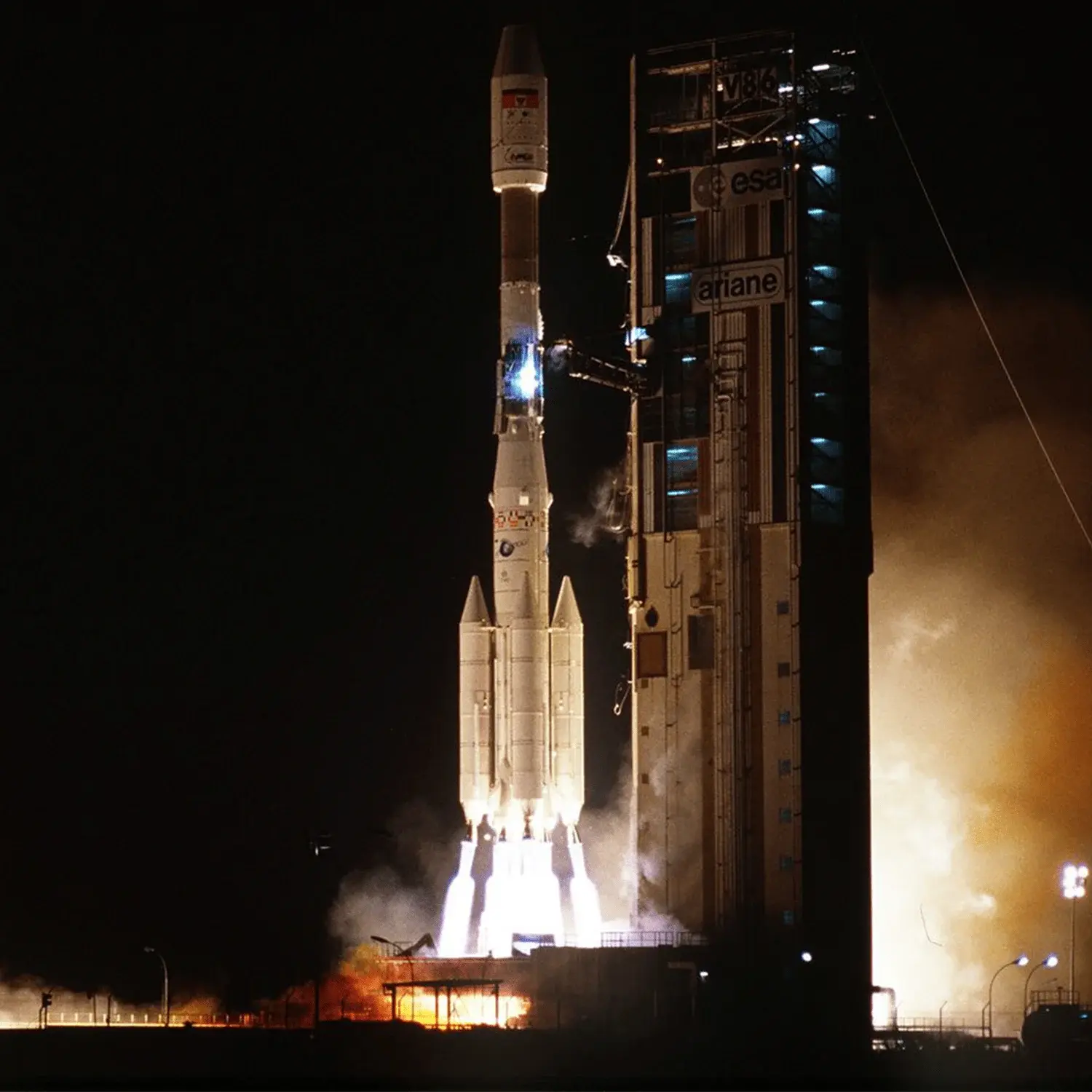Italsat-1 & Eutelsat 2F2
Launch Success
Liftoff Time (GMT)
23:10:00
Tuesday January 15, 1991
Mission Details
Launch Notes
Flight V41.
Italsat-1
Italy's first operational communications satellite was launched on 15 January 1991 by an Ariane-44L H10 booster. Developed by a contractor team led by Alenia Spazio, Italsat carries ten active transponders plus five spares for 30/20 GHz and 50/40 GHz links with a capacity of 12,000 telephone circuits. The 900 kg (on-station) spacecraft consists of a rectangular bus 2.3 m by 2.7 m by 3.5 m and two solar panels with a total span of 21.8 m capable of generating more than 1.5 kW of power. The design life for the first test vehicle is only five years, increased to 8 for the second Italsat. Italsat 2 was launched in 1996 by an Ariane-44L H10-3. It also carries ESA's first European Mobile Services (EMS) payload. Italsat 2 was undergoing environmental testing in France in late 1994. Italsat 1 is stationed at 13.2 degrees E, also the home of Italsat 2. The satellites were moved to graveyard orbits in January 2001 and July 2002 respectively.
Geostationary Transfer Orbit
1 Payload
1,850 kilograms
Eutelsat 2F2
In 1990 Eutelsat began the deployment of the second generation Eutelsat spacecraft procured directly from Aerospatiale and based on the Spacebus-2000 design. Each Eutelsat 2 spacecraft supports 16 transponders (with eight spares) operating at 14/11 GHz and 50 W output power. In orbit, the spacecraft spans 22.4 m across the two rectangular solar arrays which generate up to 3.5 kW. Eutelsat 2 employs two, 1.6 m diameter multifeed reflectors, one on each side of the spacecraft bus. Throughout 1993-1994, the Eutelsat 2 constellation consisted of four spacecraft: Eutelsat-2 F1 at 13 degrees E, Eutelsat-2 F2 at 10 degrees E, Eutelsat-2 F3 at 16 degrees E, and Eutelsat-2 F4 at 7 degrees E. Eutelsat-2 F5 was scheduled to join the network in 1994 but was lost in an Ariane-44LP H10+ launch failure on 24 January 1994. The last of the series, the Eutelsat-2 F6 spacecraft was modified and scheduled for launch in 1995 under the name Hot Bird 1. The vehicle will be essentially the same as its predecessors, but the transponder output power will be increased from 50 W to 70 W.
Geostationary Transfer Orbit
1 Payload
1,878 kilograms
Rocket


Manufacturer
ESARocket
Diameter: 3.8m
Height: 58.72m
Payload to Orbit
GTO: 4,720 kg
Liftoff Thrust
6,000 Kilonewtons
Stages
3
Strap-ons
4
Launch Site
Stats
Ariane 4
13th
Mission
1st
Mission of 1991
European Space Agency
32nd
Mission
1st
Mission of 1991
1991
3rd
Orbital launch attempt